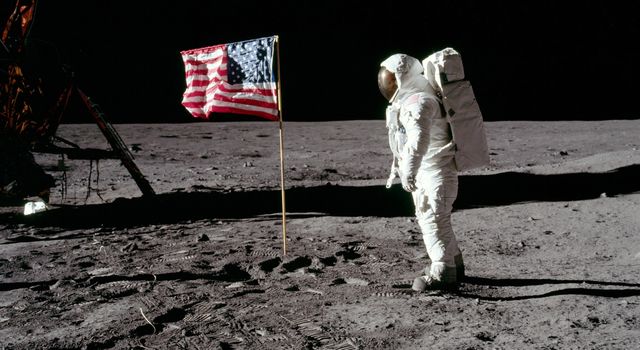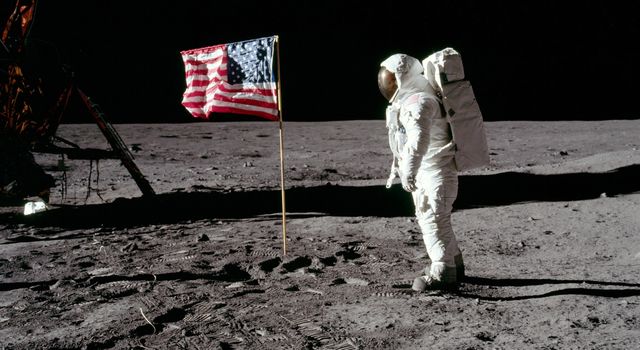
The Science Goals Of NASA’s Upcoming Artemis Missions
For the past few years, NASA has been working to prepare for the elaborate task of returning humans to the Moon. This process is quite complex however if successful it will create a sustained human presence and prepare us for future missions to Mars and beyond. Not only this but NASA has a long list of goals and objectives for the Artemis missions surrounding science.
NASA wants to create a more permanent human presence on the Moon not only to prepare us for the future but also to conduct constant science. Specifically, NASA has a list of priorities revolving around science that are meant to be conducted on the surface of the Moon. These same experiments will help answer questions that can apply to Earth and other planets.
While we have sent humans to the Moon before, this was around 50 years ago. By now a lot has changed and we have the capability to send more people, and resources to the planet. This helps astronauts not only stay longer but perform constant experiments and general science. Here I will go more in-depth into what exactly NASA plans for the future of the Moon.
Science Priorities
While NASA’s plan consists of keeping humans on the surface for much longer than in the past, the time on the Moon is still very valuable. The agency has made a list of some of the top science priorities for the future of Artemis. The Moon is a cornerstone for Solar System science. The Artemis science goals will be driven by the U.S. and international science communities’ priorities. The scientific opportunities represented by the Moon, as a research platform or focus, have been captured in a multitude of community input documents. It is important to stress that Artemis enables science in a plethora of disciplines, not just lunar and planetary science. Broad lunar-based science themes that can be addressed include understanding planetary processes, understanding volatile cycles, the history of the Earth-Moon system, records of the ancient sun, observing the universe from a unique location, and more. A coordinated effort among NASA’s mission directorates is underway to ensure that these scientific priorities are met. This implementation strategy includes developing a pipeline of science and technology payloads to be delivered to the lunar surface by commercial companies. Looking at many aspects of future Artemis plans, there is a common theme being working with commercial companies. By now there are quite a few options that can provide many benefits to NASA for a long list of missions including Artemis.
Astrophysical Observations – One science goal I mentioned prior that I want to go more in-depth into is observing the universe from a unique location. A robust human and robotic exploration program provides unique opportunities to employ the Moon as a platform for high-priority astrophysics, heliophysics, and Earth science investigations. The Moon’s position relative to Earth’s magnetosphere makes it an excellent location to study the solar wind, characterize the effects of the Moon on the local plasma environment, and perform observations of the Sun and extra-solar system planets over a broad frequency spectrum. Astrophysical studies may be performed from the Moon, especially at frequency ranges not favorable for space-based telescopes. In particular, the lunar surface offers unique opportunities for long-wavelength radio astronomy from the radio-quiet far side of the Moon. A more specific example of this could be astrophysical and basic physics investigations using the Moon.
For astrophysical observations, the lunar surface offers unique advantages over other sites. Among these advantages are a large surface and a large mass that can provide shielding, for example from noise originating at Earth. One such example that utilizes the far side of the Moon involves imaging the 21 cm electromagnetic radiation spectral line to study the “Dark Ages” of the universe, the period during which the first stars began to shine, free from radio noise generated at Earth. The Moon may also play a critical role in tests of general relativity (and possibly alternative theories of gravitation) by a high accuracy determination of the lunar orbit, perhaps by deploying retroreflectors for laser ranging from Earth. Furthermore, the gravitational waves predicted by general relativity could be detected by interferometers that benefit from, for example, the low seismic activity characteristic of the lunar surface. The Moon may also serve as an optical bench for interferometers allowing one astronomical unit target resolution.
Observing Earth – Another specific science goal under the category of observing the universe includes our own planet. As it does for heliophysics and astrophysics investigations, the Moon supplies a convenient platform for Earth science. Note that the Moon’s orbit at 60 Earth radii is about four times closer to the Earth than is the Lagrange L1 point, a popular location for spacecraft such as NASA’s Deep Space Climate Observatory (DSCOVR). Consequently, it is likely that observations from the Moon will have higher resolution than would similar observations made at L1. Myriad science investigations targeting topics such as lightning, Earth’s albedo, atmosphere, exosphere, the oceans, infrared emission, and radar interferometry may be accomplished from the surface of the Moon. The Moon also offers a unique vantage point for full-disk observations that can help advance investigations of Earth as an exoplanet, focusing on key signatures of life to enhance current terrestrial exoplanet observation and characterization methods from ground-based and space-based observatories.
Psychological Effects – The last interesting science goal of Artemis I wanted to highlight has to do with the study of humans on the surface of the Moon. It is essential to understand how biological systems behave and are affected by the lunar surface environment in order to characterize and validate countermeasures. Also, identification of key physiological effects requires understanding biological responses from an integrative systems perspective by studying individual physiological systems, the interactive dynamics between all physiological systems, and identifying underlying genetic alterations and biochemical and molecular networks and mechanisms.
The identification and characterization of underlying mechanisms and network systems play an important role in discovering the key physiological processes that are altered by the lunar environment and aid in identifying biomarkers for diagnostics and specific targets for countermeasures, and understanding countermeasure effects, specific and side-effects. Questions, such as “what are the early changes that are predictive of and lead to eventual observable tissue changes and symptoms?”, or “how early do changes at the molecular and biochemical levels occur, which eventually affect physiological morphology and functions?”, and “what are the changes at the genomic level”, can be studied using systems biology analyses. Novel data and an initial baseline of data may be acquired from basic experiments using model biological systems.
Conclusion
NASA is preparing in practically every way for the upcoming missions to the Moon. It not only involves the physical components necessary but a very thorough plan on what exactly the agency hopes to achieve and discover while on the surface of the Moon. Here I mentioned only a few out of the many science goals NASA has for future missions. These same goals include astrophysical observations, Earth observations, and psychological effects. All of which play an important role in future missions, understanding our place in the universe, and much more. As time goes on we are getting closer and closer to the first Artemis missions. We will have to wait and see how NASA progresses and the impact it has on the space industry.
